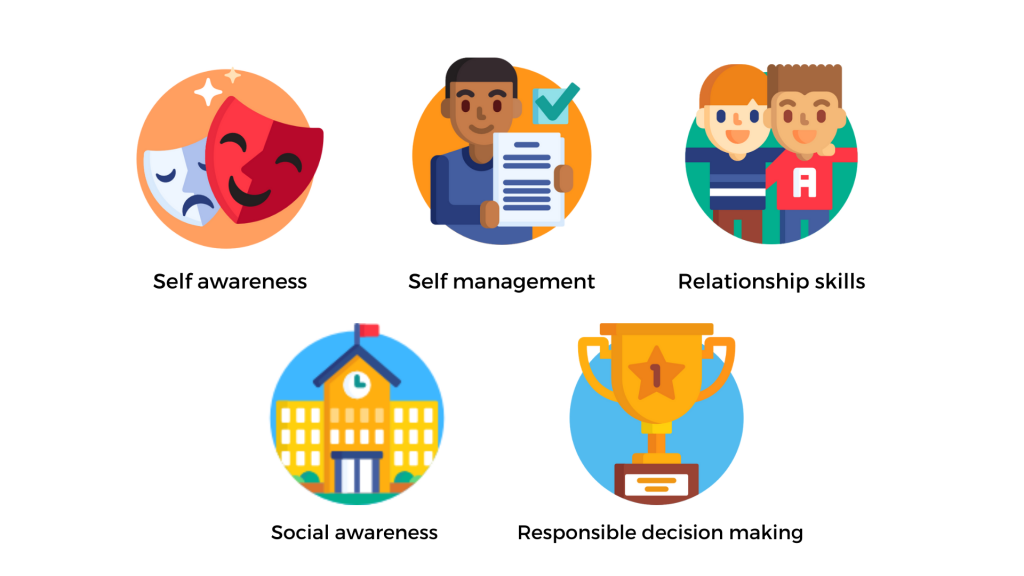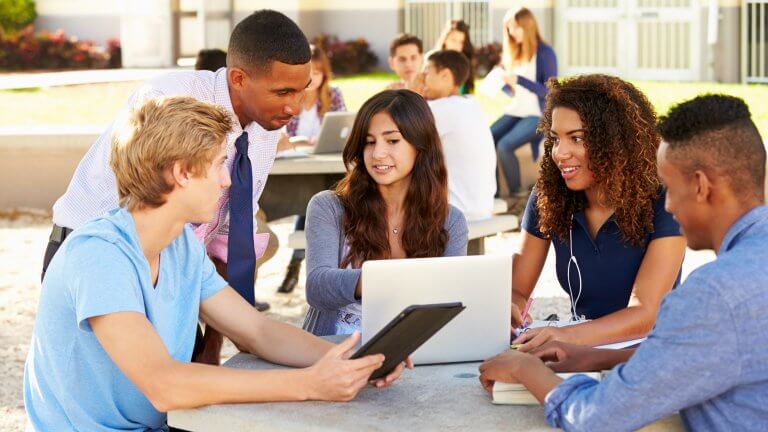Social and Emotional Learning (SEL) is more than just a buzz word in education. It’s not a new concept either, SEL, has been around for years, but has just recently started to gain respect, attention, and importance in the world of education. Especially after a year spent navigating a pandemic.
The Collaborative for Academic, Social, and Emotional Learning describes SEL as “the process through which children and adults acquire and effectively apply the knowledge, attitudes, and skills necessary to understand and manage emotions, set and achieve positive goals, feel and show empathy for others, establish and maintain positive relationships, and make responsible decisions.”
In a nutshell, Social and Emotional Learning is all about understanding how people grow and learn socially and emotionally by looking at the daily interactions and experiences that influence their emotions, behavior, and thereby affect their choices.
Social and Emotional Learning provides educators and families with a common language and framework to create a welcoming climate and culture for learning from each other. SEL can be used to intentionally engage educators in facilitating classroom instruction, systems, and behavior management strategies. Parents can also use SEL to develop common languages and behavior strategies! While some behavior models might focus on corrective action solely, SEL focuses on building engagement, highlighting trust, and establishing collaboration between all members of the education community.
How does Social and Emotional Learning work?
Typically, Social and Emotional Learning gets broken down into 5 core competencies that help promote interpersonal and cognitive growth and development within students.

- Self Awareness
- Self Management
- Social Awareness
- Relationship Skills
- Responsible Decision Making
Self awareness
You can think of self-awareness as being able to accurately recognize your own emotions, thoughts, and values! Those with high senses of self-awareness understand how these emotions influence our behavior.
We often assume that our students must understand what emotions they’re feeling. However, students learn to describe their emotions through constant practice and exposure. It’s not a skill we’re born with, but one that must be nurtured.
Self Management
The regulation of your emotions, thoughts, and behaviors depending on the situation is what makes up self-management. Social and Emotional Learning stresses the importance of understanding the appropriate times to experience emotions. It also stresses the importance of finding ways to deal with negative stresses, impulses, and motivations.
Think of an incredibly stressful experience you’ve had in the past. Maybe for your students, it’s their first heartbreak. They likely will experience a high level of sadness, anger, and maybe even anxiety. Those with high senses of self-management understand there’s a time and place for their anger and anxiety. Those with low senses of self-management might yell or scream at their friends during lunch. They might face incredibly high levels of anxiety and sadness that distract them from an important test or lesson.
Social awareness
Being able to understand and empathize with all sorts of people from diverse backgrounds and cultures is what makes us human. Social and Emotional Learning helps students understand social and ethical norms for behavior, while also learning to appreciate diversity.
Those with high social awareness will understand and respect the communities they’re part of and the communities that they intersect with. They’ll be able to understand the norms of school life, team life, or future workplaces.
Relationship skills
Learning how to establish and maintain healthy and rewarding relationships is critical. Social and Emotional Learning teaches clear communication with your relationships. It also focuses on building up your listening skills and cooperating with others.
The end results are students with longer-lasting, more productive and valuable, relationships. Those who don’t learn valuable relationship skills might be confrontational or stubborn to a fault. They might have few close relationships and not be able to see the warning sites for unhealthy relationships in the future.
Responsible decision makings
School is all about making constructive choices about our personal, social, and academic interactions and behaviors. Social and Emotional Learning focuses on ethical standards, safety, social norms, and teaching students to understand the consequences of their actions.
It also gives students the tools they need to identify, analyze, and evaluate their problems to make better decisions for themselves and others.
The benefits of Social and Emotional Learning
Plenty of research has been done into the benefits of Social and Emotional Learning. Studies confirm that when taught appropriately, SEL leads to positive outcomes for our students. This sets them up for success later in life.
By focusing on the core competencies of SEL, we improve our students’ attitudes, relationships, and academic performance. We help reduce our students troubling emotions like anxiety and depression. Schools with strong SEL programs also show decreases in behavior problems and substance abuse.
There are long term benefits to teaching Social and Emotional Learning. Long-term, we can improve our students prosocial behavior, helping them succeed in college and the work force. We can give them positive attitudes that help them navigate future crisises. We can also help them build decision making strategies that lead to smarter and more productive career and financial decisions later in life.
How can schools implement Social and Emotional Learning
To improve the overall climate of your schools, these 5 core competencies can be taught in a variety of ways: from free-standing lessons specifically created to boost your students’ social or emotional needs, to organized strategies promoting SEL on a school-wide level.
SEL is implemented across all three tiers of behavior support: campus-wide support, small groups of students, and individual student needs.
Some examples of this include:
- Lessons designed to build students’ social and emotional competence explicitly
- Weaving Social Emotional Learning teaching practices like cooperative learning and project-based learning into classes.
- Integrating Social Emotional Learning into an academic curriculum like Language Arts, Math, Social Studies, or Health.
- Creating organized strategies that promote Social Emotional Learning on a campus level.
As Social Emotional Learning is adopted in schools, both short-term and long-term progress is made: boosting both academic and behavioral outcomes, and creating schools that are positive healthy, engaging, and culturally respectful.
Monica Kurtz is a Behavior Specialist at Region 13. Her background includes over 10 years of experience in early childhood education, as well as 15 years at the Texas School for the Deaf working with students from Kindergarten to adult-learners who are deaf and also have additional disabilities. Her work at Region 13 includes supporting and coaching behavior teachers and programs, supporting the PREPARE curriculum, and working with educators to support individual students. Monica has a master’s degree in education, focusing on trauma and resiliency in curriculum. She is passionate about working with educators in understanding the effects of childhood trauma and how to build resiliency and student coping skills.





Add comment